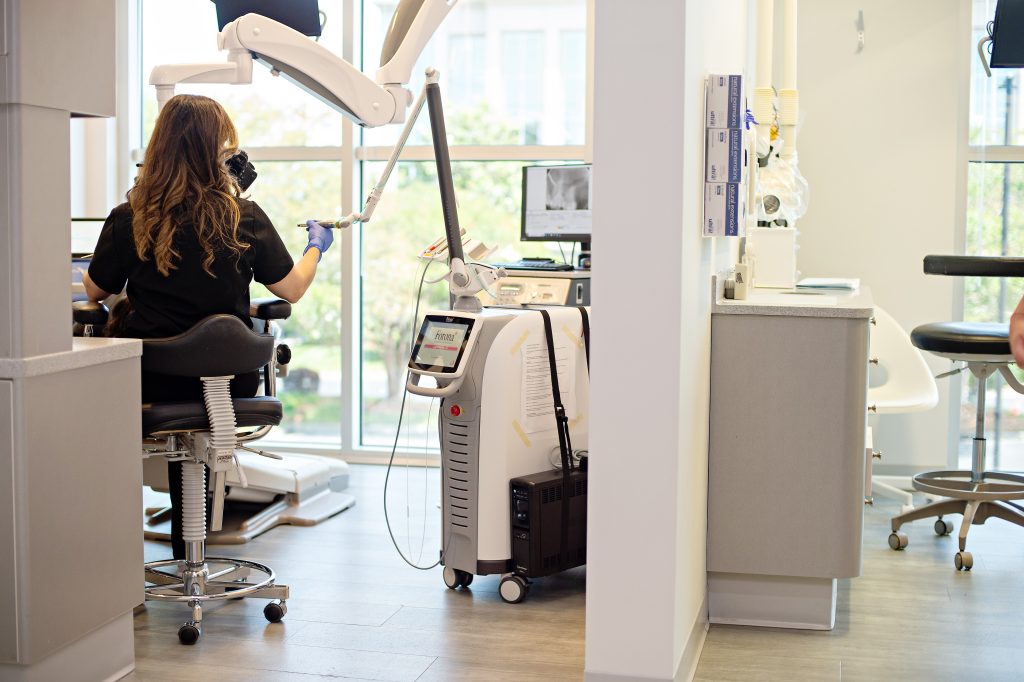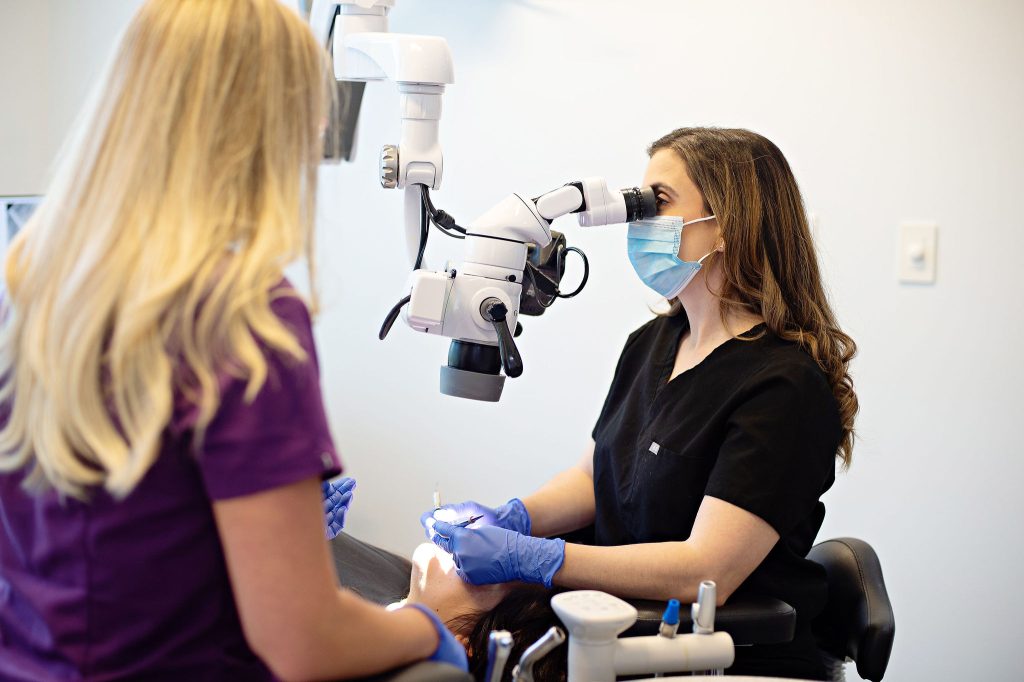Is Gentlewave Worth It?
Key Takeaways: Understanding GentleWave: GentleWave is an advanced root canal irrigation system that utilizes sound waves and fluid dynamics to effectively clean and disinfect root canals while preserving more of the natural tooth structure. Benefits of GentleWave: This minimally invasive procedure offers thorough cleaning, reduces discomfort, and often requires fewer appointments, making it a comfortable…
Read MoreReinfected Root Canal: How This Happened & What To Do
Key Takeaways: Root Canal Failure: It can occur if bacteria are not fully removed or if there are cracks, fractures, or delays in restoration, allowing bacteria to re-enter. Symptoms of Reinfection: Include persistent pain, swelling, and bad taste, which require prompt treatment to avoid worsening. Treatment Options: The top treatment options include endodontic retreatment, apicoectomy,…
Read MoreWhy Do I Need a Root Canal Again?
Key Takeaways: Causes of Root Canal Reinfection: Root canal reinfection can occur due to several factors, including cracks or damage to the treated tooth, as well as incomplete cleaning and sealing during the initial procedure. Signs You May Need a Root Canal Again: Symptoms indicating the need for a root canal retreatment are sensitivity to…
Read MoreWhy Do Root Canals Fail?
Key Takeaways: Incomplete Removal of Infection: Why do root canals fail? One reason is if all infected tissue and bacteria isn’t entirely removed during the initial procedure. However, this is not the only cause of failure. Root Canal Treatments: Another cause is the complex anatomy of some teeth, which can make root canals challenging. Advanced…
Read MoreBiological Root Canal: What Happens During The Procedure
Key Takeaways: Nature of a Biological Root Canal: A Biological Root Canal is a specialized dental procedure performed by an endodontist to address infections in the tooth’s pulp and nerve. It focuses on using natural and biocompatible materials, such as bioceramics and advanced irrigation, to promote healing and reduce the risk of infection recurrence. Procedure…
Read MoreCost of a Root Canal: What You Need To Know
Key Takeaways: Signs and Importance of Root Canals: A root canal is a dental procedure aimed at removing infected or inflamed pulp from a tooth. Symptoms indicating the need for a root canal include severe tooth pain, sensitivity to hot and cold, swelling or tenderness in the gums, and tooth discoloration. Cost of a Root…
Read MoreBiological Root Canals: A Guide
Key Takeaways: Biological Root Canals Prioritize Natural Healing: The biological root canal is an enhancement of traditional root canal treatments. Using minimally invasive instruments, advanced irrigation technology and biocompatible sealers, it strives to preserve as much natural tooth structure as possible while supporting the body’s natural healing processes—thus decreasing reinfection risk and supporting long-term vitality.…
Read MoreBenefits of Root Canal Treatment
Key Takeaways: Tooth Preservation: A root canal helps save your natural tooth, which is irreplaceable and maintains your natural bite, alignment, and function. Pain Relief: It alleviates severe tooth pain caused by infection or decay, allowing you to enjoy eating, drinking, and sleeping without discomfort. High Success Rate: Root canals are highly successful, with over…
Read MoreConsequences of Delaying a Root Canal
Key Takeaways: Tooth Loss: Delaying treatment can lead to severe infection and bone loss, potentially resulting in the loss of the tooth. Prolonged Pain: Postponing the procedure means prolonged discomfort or worsening pain from the infection. Spreading Infection: The infection can spread to other parts of the body, leading to more severe health issues. A…
Read MoreEndodontic Surgery vs. Root Canal: What is the Difference?
Key Takeaways: Root Canal: Typically the first treatment option for saving an infected tooth, focusing on cleaning and sealing the tooth’s root. Endodontic Surgery: Recommended if a root canal fails or the infection persists, involving a surgical procedure like an apicoectomy. Treatment Decision: The choice depends on the severity and location of the infection, with…
Read More









